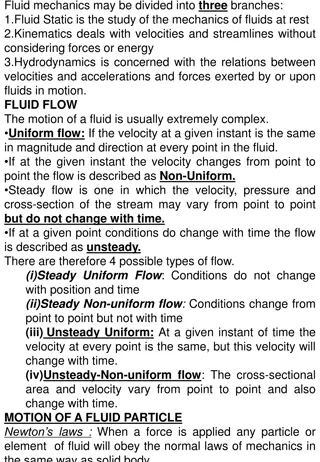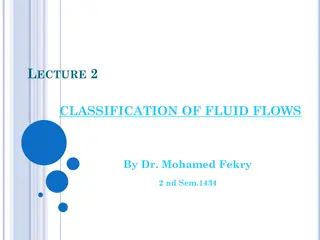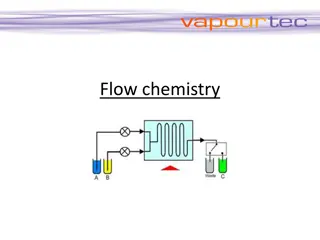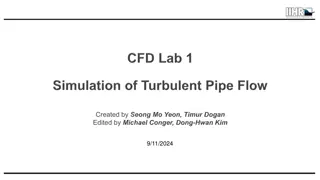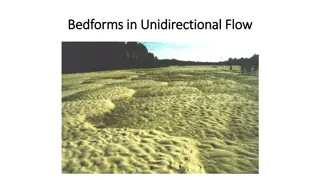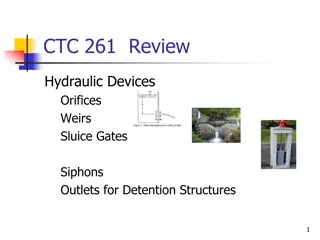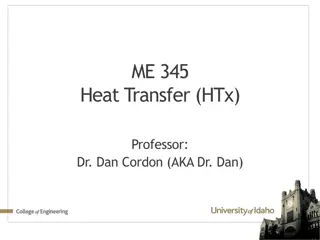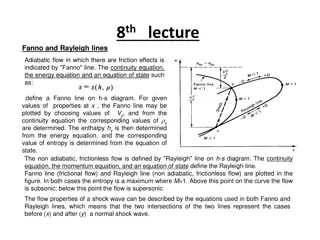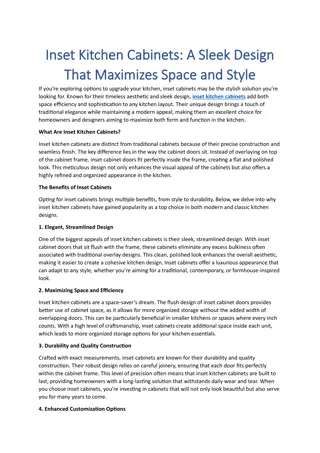Laminar Flow Cabinets
Laminar flow cabinets are carefully enclosed benches designed to prevent contamination of biological samples and protect products, operators, and the environment. They utilize HEPA filters to provide a particulate-free work environment, with different types suited for various levels of risk operations. Biological Safety Cabinets (BSCs) play a crucial role in providing personnel and product protection. This detailed overview covers the theory, construction, and modes of action of laminar flow cabinets, emphasizing the importance of maintaining clean and controlled workspaces in laboratory settings.
Download Presentation

Please find below an Image/Link to download the presentation.
The content on the website is provided AS IS for your information and personal use only. It may not be sold, licensed, or shared on other websites without obtaining consent from the author.If you encounter any issues during the download, it is possible that the publisher has removed the file from their server.
You are allowed to download the files provided on this website for personal or commercial use, subject to the condition that they are used lawfully. All files are the property of their respective owners.
The content on the website is provided AS IS for your information and personal use only. It may not be sold, licensed, or shared on other websites without obtaining consent from the author.
E N D
Presentation Transcript
Sterile Products Lab PHT 434
Definition Laminar flow cabinets are a carefully enclosed bench designed to: Prevent contamination of biological samples, or any particle sensitive device. Protect the product, operator, and/or environment. Laminar flow: An airflow moving in a single direction and in parallel layers at constant velocity from the beginning to the end of a straight line vector. HEPA filters: High Efficiency Particulate Air: remove at least 99.97% of airborne particles 0.3 m in diameter.
Laminar Flow Cabinets Theory: Unidirectional air moving at a fixed velocity along parallel lines (laminar flow) was demonstrated to reduce turbulence and aid in the capture and removal of airborne contaminants from the air stream. Use of the HEPA filter provides a particulate-free work environment. Mode of Action: Air is drawn through a HEPA filter and blown in a very smooth, laminar flow towards the user.
HEPA filters: Constructed of: paper-thin sheets of borosilicate medium pleated to increase surface area affixed to a frame. Aluminum separators are added to: prevent pleats from collapsing in air stream provide a path for airflow.
Types of Laminar Flow Cabinets A- Biological Safety Cabinets (BSCs): Class I (Low risk operations) 1. 2. Class II (Moderate risk operations) Type A Type B A. B. 3. Class III ((High risk operations) B- Clean Benches: Horizontal Laminar Flow 1. 2. Vertical Laminar Flow
Biological Safety Cabinets (BSCs) BSCs are designed to provide personnel, environmental and product protection Most BSCs use high efficiency particulate air (HEPA) filters in the exhaust and supply systems. The exception is a Class I BSC which does not have HEPA filtered supplyair.
BSCs class I Personnel & Environmental protection. No product protection. It is like a fume hood, but has a HEPA filter in exhaust system to protect environment. Uses: 1. enclose equipment, e.g.: 1. centrifuges 2. harvesting equipment 3. small fermenters 2. procedures with potential to generate aerosols, e.g.: 1. animals cages dumping 2. culture aeration 3. tissue homogenation.
BSCs class II provide personnel, environmental and product protection Uses: provide the microbe-free work environment necessary for cell culture propagation 1. 2. formulation of nonvolatile antineoplastic or chemotherapeutic drugs Types: Type A 1. 2. Type B
BSCs class II Type A Exhaust air re-circulated to the laboratory. Not to be used for work involving volatile toxic chemicals
BSCs class II Type B Two HEPA filters for supply and exhaust. Exhaust air must be discharged to outdoors via a hard connection. HEPA filters are effective at trapping particulates (e.g. infectious agents) but do not capture volatile chemicals or gases. Uses: in volatile, toxic chemicals, but amounts must be limited.
BSCs class III Two HEPA filters for supply and exhaust. Maximum protection for environment and worker discharge to the outdoors Uses: Working with highly infectious microbiological agents conduction of hazardous operations 1. 2.
BSCs Surface Decontamination All containers and equipment should be surface decontaminated and removed from thecabinetwhen work is completed. At the end of the work day, the final surface decontamination of the cabinet should include a wipe-down of the work surface, the cabinet s sides and back and the interiorof theglass. If necessary, the cabinet should also be monitored for radioactivity and decontaminated when necessary. Any splatter onto items within the cabinet, as well as the cabinet interior, should be immediately cleaned up with a towel dampened with an appropriate decontaminating solution
BSCs Gas Decontamination The mostcommondecontamination method uses: Formaldehyde gas 1. 2. Hydrogen peroxidevapor 3. Chlorinedioxide gas
Ultraviolet Lamps in BSCs If installed, UV lamps must be cleaned weekly to remove any dust and dirt that may block the germicidal effectivenessof the ultraviolet light. The lamps should be checked weekly with a UV meter to ensure that the appropriate intensity of UV light is being emitted
Clean Benches Provide product protection They can be used for certain clean activities, such as the dust- free assembly of sterile equipment (in hospital pharmacies for preparation of intravenoussolutions). These benches should never be used for the manipulation of potentially infectiousor toxic materials. Two types: Horizontal Laminar Flow 1. Vertical Laminar Flow 2.
Horizontal Laminar Flow Horizontal laminar flow clean benches are not BSCs. These pieces of equipment discharge HEPA-filtered air from the back of the cabinet across the work surface and toward the user.
Vertical Laminar Flow Vertical laminar flow clean benches also are not BSCs. While these units generally have a sash, the air is usually discharged into the room under the sash, resulting in the same potential problems presented by the horizontal laminar flow clean benches. These benches should never be used for the manipulation of potentially infectious or toxic materials.







